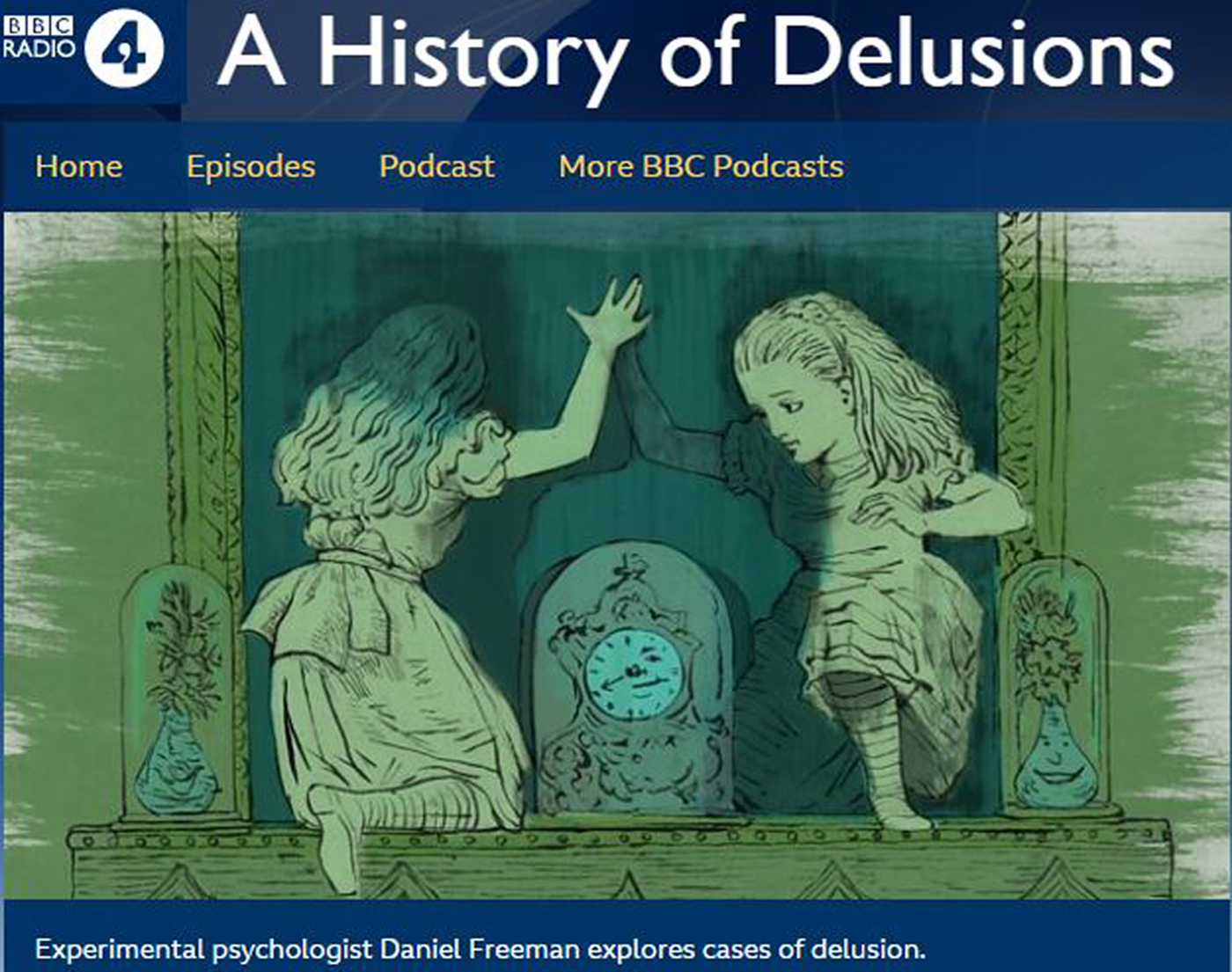
As an undergraduate, Oliver Sacks' engaging descriptions of agnosia, neglect and savantism in The Man Who Mistook His Wife for a Hat left me hungry for more. I whiled away hours in the Psychopathology Library, consuming the first-person accounts of psychosis published monthly in Schizophrenia Bulletin. In A History of Delusions, Daniel Freeman brings a menagerie of delusions to life. First, he contextualises them with their earliest descriptions, from Revolutionary France or the Bedlam asylum. Then he invites us to listen as he interviews people who once believed that they were dead (Cotard delusion), that their loved ones had been replaced by an imposter (Capgras delusion), that they were being ministrated against (paranoia) or filmed for reality television (The Truman Show). My younger self would have adored this programme. It is a wonderful resource for trainees for whom direct clinical experience may not be forthcoming.
However, the series recapitulates some challenges that befall the study of delusions. Delusions are notoriously difficult to define. Freeman disavows that they are ‘empty speech acts’ without manifest conviction; they are, for him, beliefs. But the terminology shifts throughout: delusions are, variously, ‘experiences’, ‘feelings’, ‘encoded hopes and wishes’. Such promiscuity hampers a deeper understanding. Furthermore, delusions can be difficult to distinguish from other strongly held beliefs. Freeman and his collaborators claim that delusions represent the extreme end of a continuum from health to illness. This view has been immensely generative with regards to psychological and neurobiological research. However, hearing delusions described as a normal variate might be a disservice to those who continue to experience them. Even if they are continuous, a line must be drawn beyond which they transition from quirk to actionable complaint. Where exactly to draw that line is, sadly, unresolved.
In physics, the observer effect suggests that the act of observing changes what is observed. So, too, in symptom interviews. Some sound like a negotiation between Freeman and his interviewees, homing in on the point being made. Other theorists may well have included interviews that did not fit the prevailing narrative; these surely exist and would have been welcome. But they could well have detracted from the thrust and poise of the podcasts.
The series focuses on the psychology of delusions. But a discussion of two-factor theory, a cognitive neuropsychological account grounded in neurological case studies, is alluded to only briefly. One episode describes the delusions consequent to anti-NMDA receptor autoimmune encephalitis, a clear example of delusions with a known biological, neural cause. Yet we are told ‘we have no idea why blocking these receptors gives rise to delusions’. This was a missed opportunity to cover theories that unite brain and mind emanating from outside British clinical psychology. Nevertheless, these bite-sized windows on the most puzzling aspects of human comportment are captivating and will, I am sure, spur others to take on the challenge of explaining delusions.





eLetters
No eLetters have been published for this article.